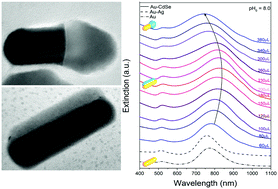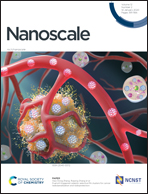Asymmetric synthesis of Au–CdSe core–semishell nanorods for plasmon-enhanced visible-light-driven hydrogen evolution†
Abstract
The metal–semiconductor heterostructure is an important candidate for photocatalysis due to its efficient charge transport and separation. A controllable morphology and ideal interfaces are critically significant for improving the heterostructure photocatalytic performance. By controlling the concentration of Cd2+ to control the reaction environment (pH value) and reaction rate, the CdSe nanocrystal is overgrown on the side or tip of the Au nanorods, which leads to a strong interaction between the excitons of CdSe nanocrystals and the plasmons of Au nanorods. Both kinds of Au–CdSe heterorods exhibit good hydrogen productivity. Particularly, the lateral Au–CdSe heterorods exhibit excellent photocatalytic efficiency due to the larger contact interface of Au and CdSe and the strong local field of the CdSe nanocrystals grown on one side of the Au nanorods being enhanced by the transverse plasmon resonance in the visible region. We provide an approach to modulate the combination of the asymmetric metal nanoparticle and the semiconductor shell; these core–semishell heterostructures have potential applications ranging from photocatalysis to photonic nanodevices.



 Please wait while we load your content...
Please wait while we load your content...